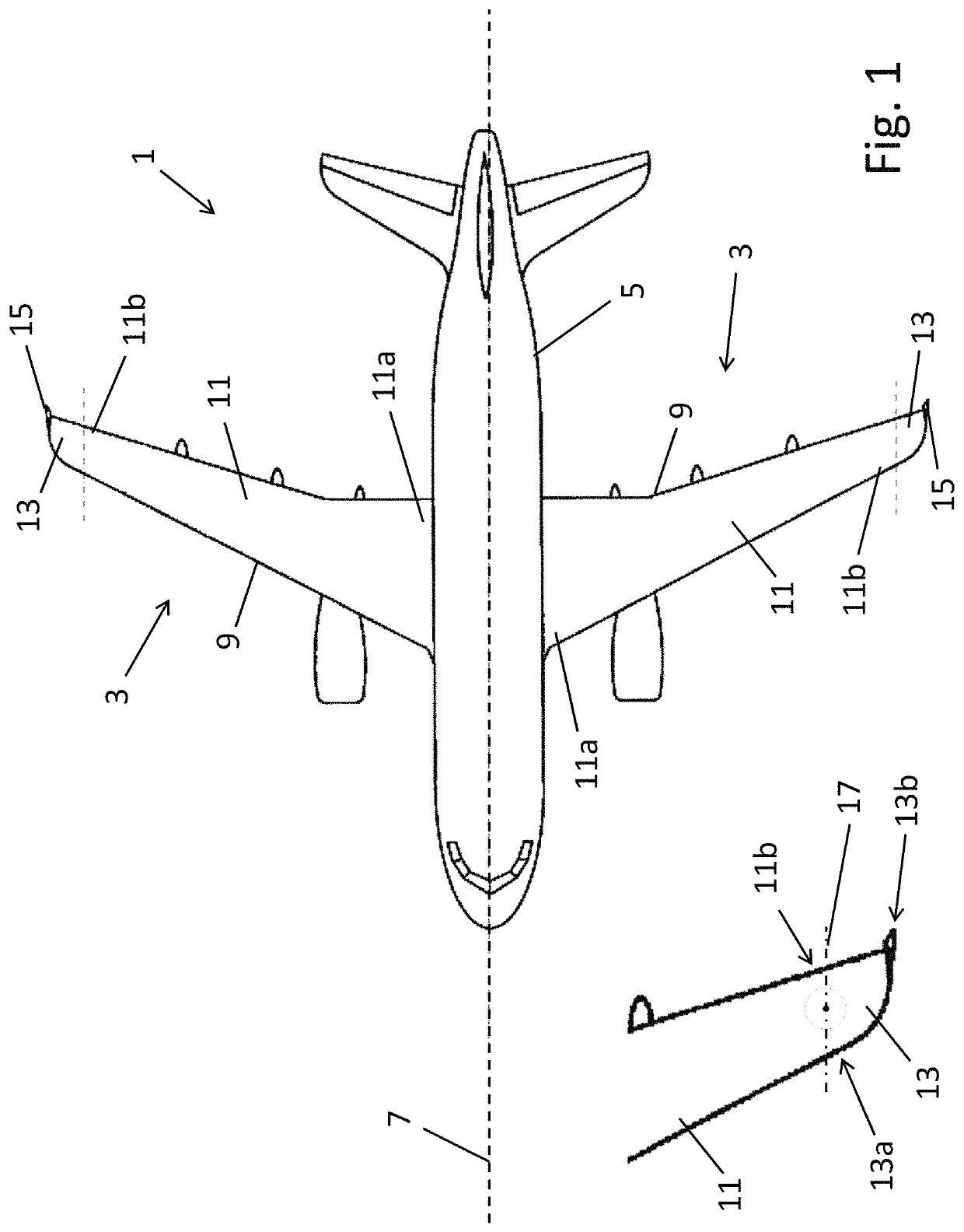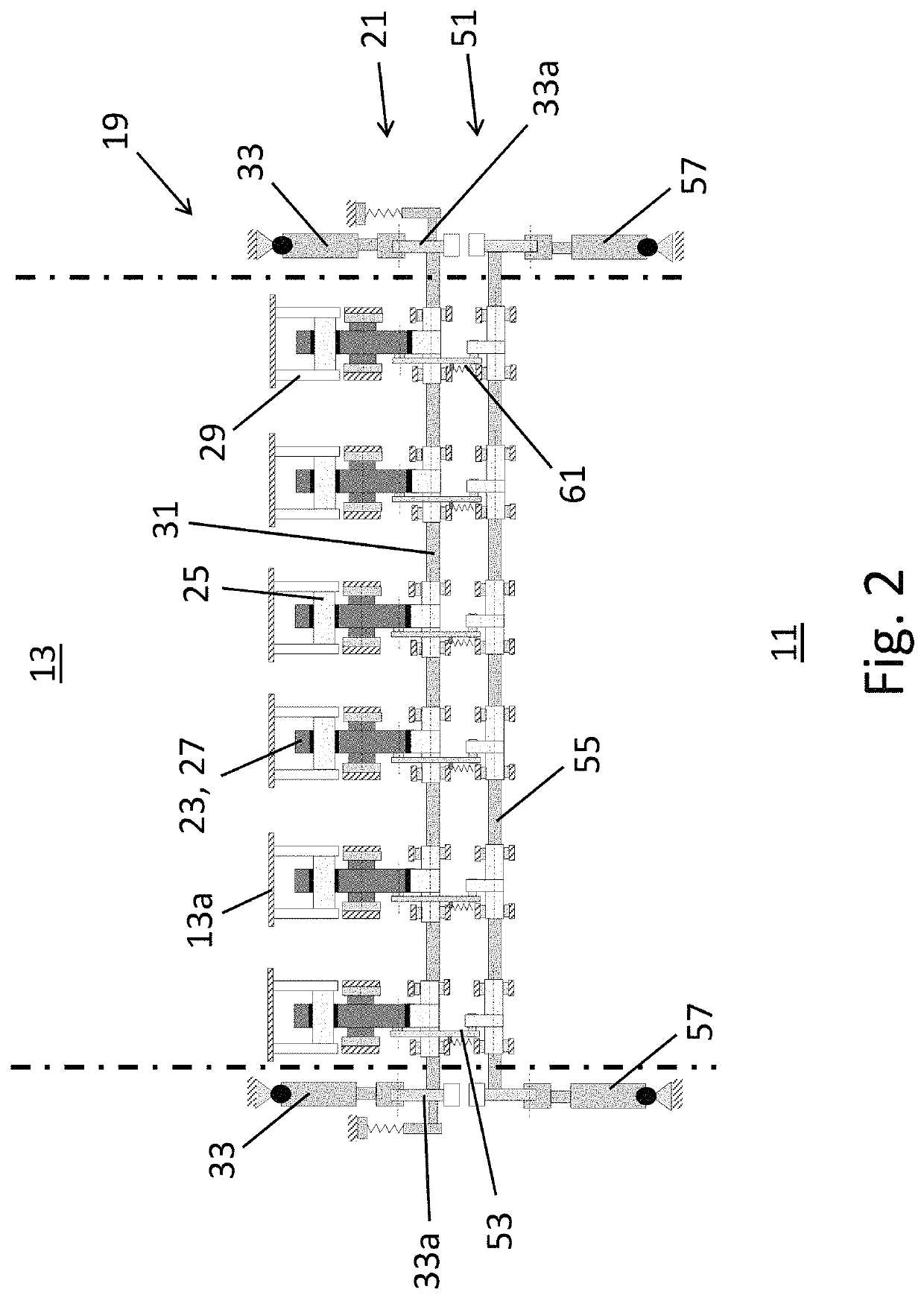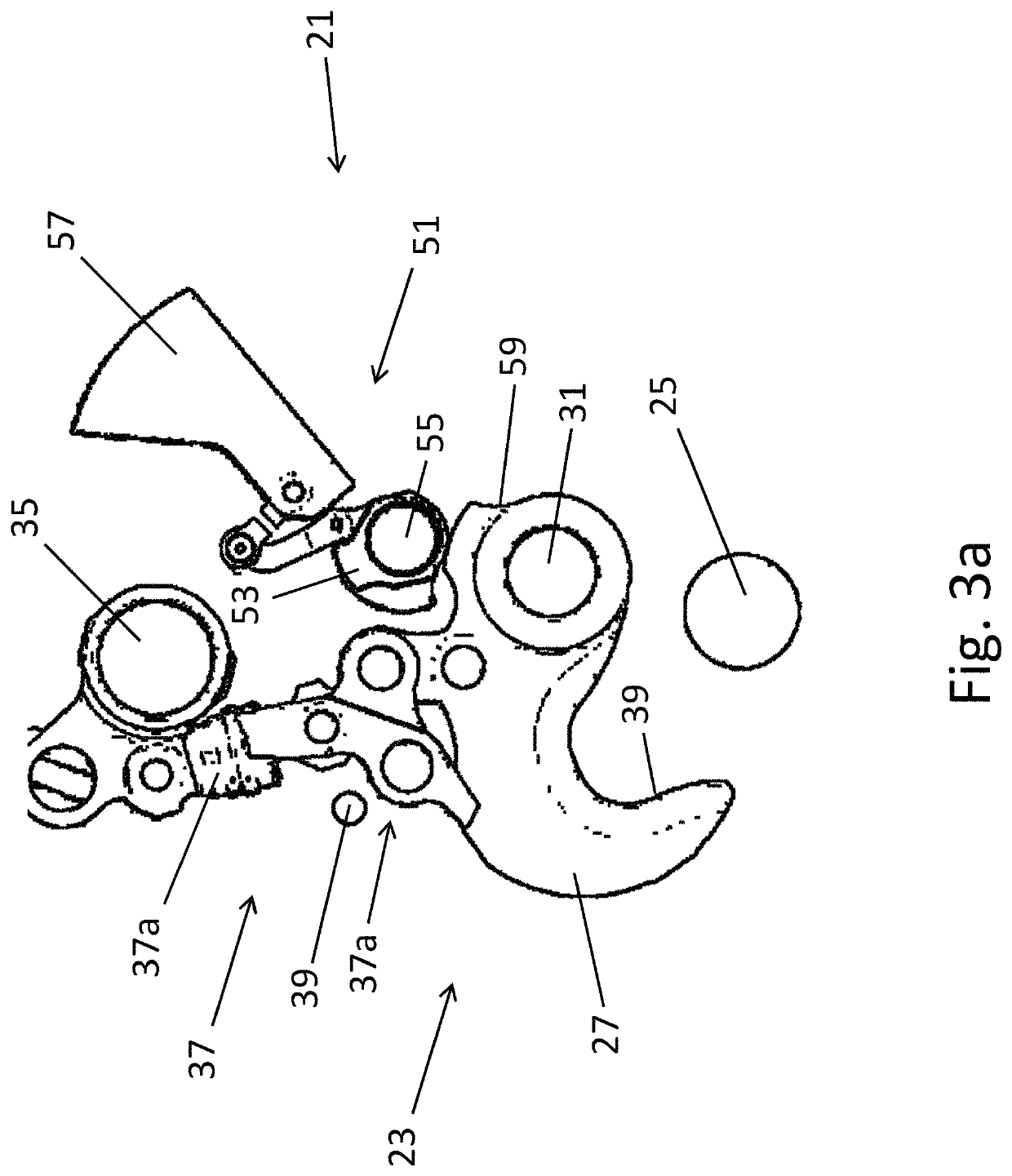Wing arrangement for an aircraft
a technology for aircraft wings and wing brackets, applied in the direction of wing adjustments, aircraft components, fastening means, etc., can solve the problems of increasing airport fees, and achieve the effect of simple construction and safe and reliable operation
- Summary
- Abstract
- Description
- Claims
- Application Information
AI Technical Summary
Benefits of technology
Problems solved by technology
Method used
Image
Examples
Embodiment Construction
[0043]FIG. 1 shows a schematic top view of an aircraft 1 which comprises two wing arrangements 3 according to the present invention. The aircraft 1 also comprises a fuselage 5 extending along a longitudinal axis 7 which corresponds to the x-axis of the aircraft 1. Each of the wing arrangements 3 comprises a wing 9 that extends away from the fuselage 5, and each wing 9 comprises a base section 11 and a tip section 13. The base section 11 has a first or inboard end portion 11a, which is configured or adapted to be coupled to the fuselage 5 and is shown to be coupled to the fuselage 5, and an opposite second or outboard end portion 11b spaced from the fuselage 5 by the remainder of the base section 11.
[0044]The tip section 13 of the wing 9 is pivotably connected to the second end portion 11b of the base section 11. More particularly, the tip section 13 extends away from the second or outboard end portion 11b of the base section 11 and comprises a third or inboard end portion 13a and an...
PUM
 Login to View More
Login to View More Abstract
Description
Claims
Application Information
 Login to View More
Login to View More - R&D Engineer
- R&D Manager
- IP Professional
- Industry Leading Data Capabilities
- Powerful AI technology
- Patent DNA Extraction
Browse by: Latest US Patents, China's latest patents, Technical Efficacy Thesaurus, Application Domain, Technology Topic, Popular Technical Reports.
© 2024 PatSnap. All rights reserved.Legal|Privacy policy|Modern Slavery Act Transparency Statement|Sitemap|About US| Contact US: help@patsnap.com










